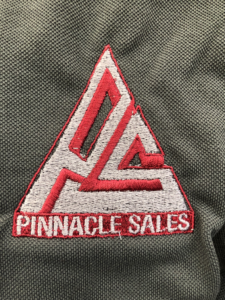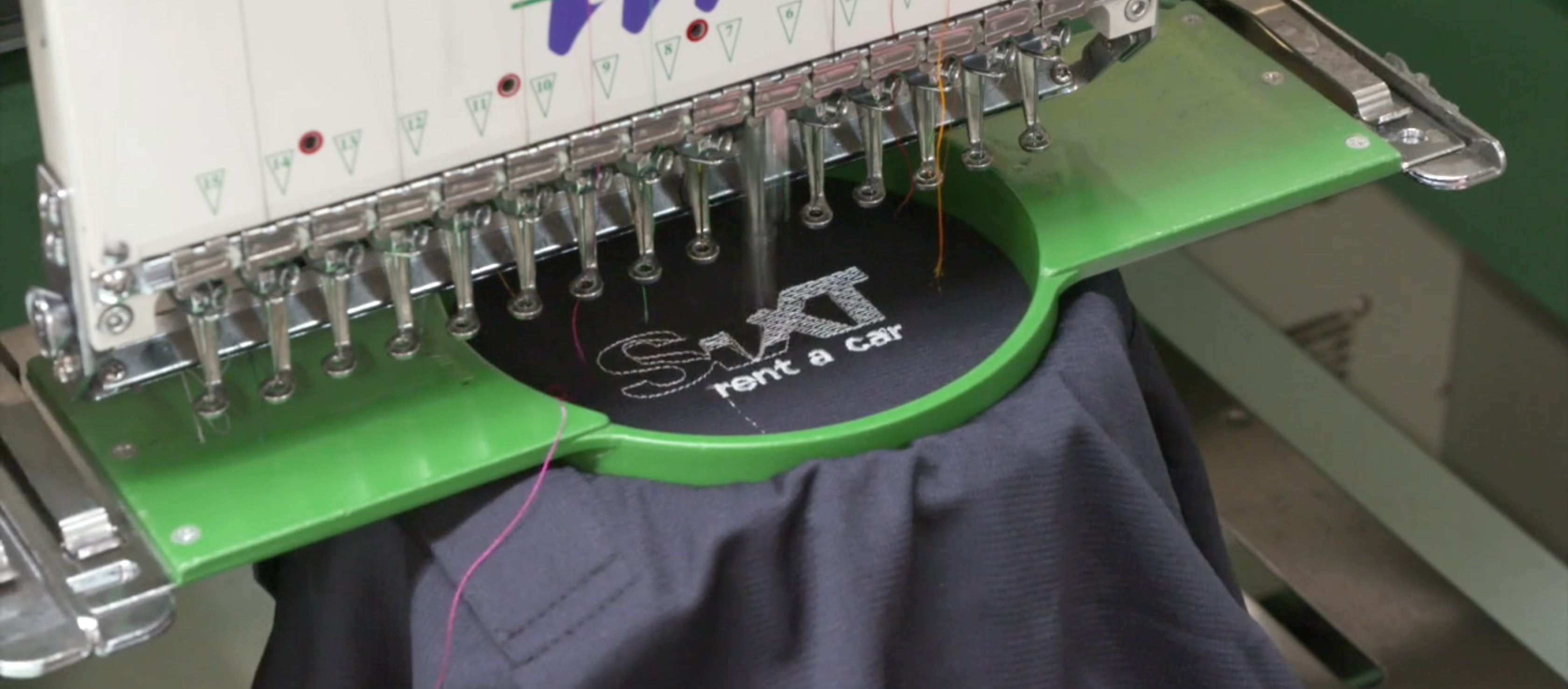One of the most frequent decoration questions SanMar receives is “How do I embroider on lightweight performance fabric?” Performance knits are perhaps the trickiest substrates that embroiders work on. They come in many different brands, weights and fabric properties, but one thing remains the same: these fabrics stretch in all directions.
Stretch is a big challenge for embroiders; it’s like sewing on a rubber band. Successful embroidering on performance fabrics depends on the quality of digitizing from programmers who know what they are doing, as well as embroidery technique from a machine operator.
The first thing when embroidering on performance fabrics is to let your digitizer know what kind of fabric the file should be used on. Not all designs are friendly to these fabrics. Digitizers must use special techniques to ensure successful embroidery. Just because it is digitized for a performance fabric does not mean it will work on other fabrics. One suggestion is to run a sample on the specific fabric you are using before committing to a production run. It will save you time and costly mistakes.
The most important factor when embroidering performance fabric is stabilization. You create this by using embroidery backing to stabilize and reduce fabric stretch. A stabilizer (referred to in industrial circles as backing) is essential for machine embroidery. It is used to support the fabric during the stitching process and to keep it from puckering or stretching.
Your choice of stabilizer can make or break an embroidery project. For stretchy fabrics, use a performance backing that tears away. This keeps the fabric from stretching in both directions and prevents drifting outlines, puckering or pooching. Please consult your supplier when buying embroidery backing and make sure you let them know you are embroidering on performance fabric.
Some suggestions:
- Needle: Use a ball point needle. This will help to avoid cutting the fabric. Also consider using a 70/10 needle when running on lightweight fabrics.
- Thread: Polyester and rayon threads are both great to use, but rayon threads may look and feel a little better on lightweight fabrics.
- Backing: Use performance backings that are lighter than 2 oz. Tear-away and cut-away backings are both good, but always cut away the backing when cleaning up the logo. Pulling on the backing to remove it may lead to stretching or distorting some lightweight fabrics.
- Stitch Density: Too many stitches in a logo could result in puckering and even needle cuts. Reduce the overall stitch density and focus more on the underlay. Proper underlay coverage will help with stability as well as help with coverage when reducing the density of the step fill or satin stitch.
- Hooping: Hooping too tightly may result in hoop burns, damaged fabric or puckering in the embroidery. Hoop the garment just tight enough to stay within the hoop when being embellished without forcing the garment into the hoop.
For more information, check our video about embroidering lightweight knits. If you have any questions, please consult your equipment supplier or you can always reach out to our Decorator and Digital Solutions Team at decoratorrelations@sanmar.com.
